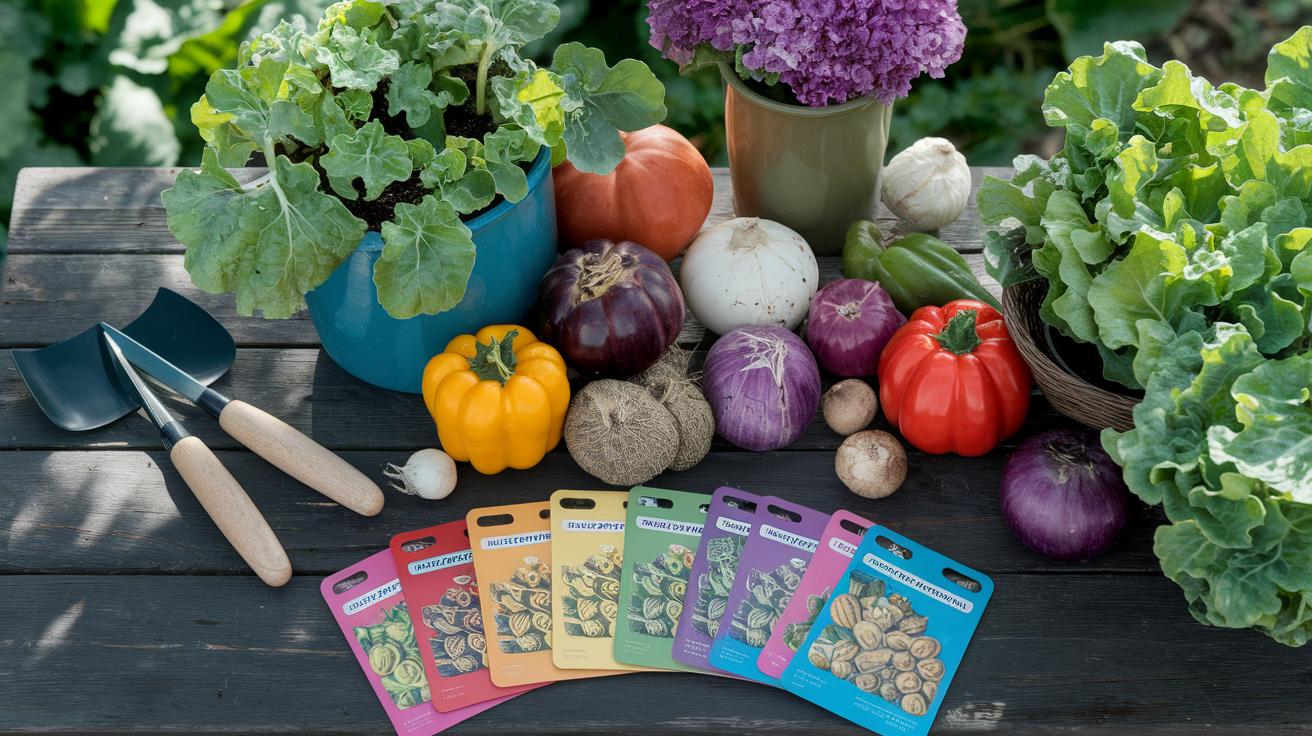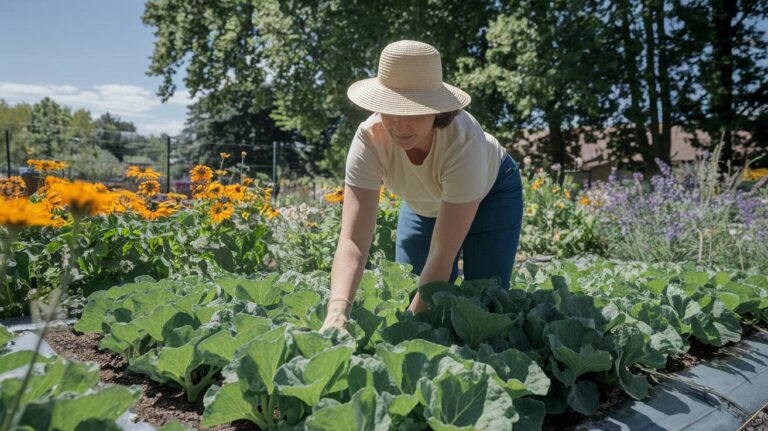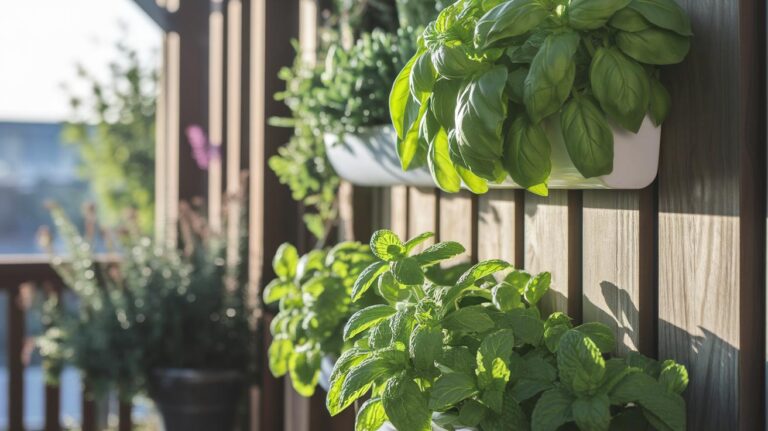Seasonal Organic Vegetable Planting Calendar: Awesome Guide
Ever dropped a little seed packet into dry dirt and just crossed your fingers? Have you ever sniffed warm earth on a spring morning and dreamed of fresh greens? You’re not the only one waiting, staring at tiny sprouts, wondering, “When do I really plant these?”
Here’s the trick: this planting calendar is your own veggie schedule. It lays out each month so you know exactly when to tuck seeds for tomatoes, peppers, kale, cucumbers, and more into warm earth that smells like fresh rain. You’ll see whether to start seeds inside or move plants into the garden.
It even flags soil warmth (the ground temperature your seeds need), gives spacing tips (how many inches to leave between each plant), and reminds you when frost might sneak in. No more guessing! You’ll swap one last nervous glance at chilly sprouts for a garden overflowing with fresh veggies!
Year-Round Organic Vegetable Planting Calendar by Month
Ever looked at seed packets and thought, when do I start these? This chart shows month by month when to sow seeds indoors or outdoors, and when to move seedlings outside (transplant window). You’ll also see soil temperature (°F) bands, spacing (gap between plants in inches), and frost notes. We cover tomatoes, peppers, eggplants, brassicas (cabbage family), leafy greens, and cucumbers, just tweak dates for your first and last frosts!
| Month | Seed Sowing (Indoors/Outdoors) | Transplant Window (move seedlings outside) | Soil Temp Range (°F) | Spacing (in) (gap between plants) | Frost Notes |
|---|---|---|---|---|---|
| January | Tomatoes, Peppers, Eggplants (indoors); Kale, Broccoli (outdoors) | Kale, Broccoli Jan-Mar | Leafy greens 45-75; Tomatoes 60-85 | Lettuce 12-18; Tomatoes 24-36; Peppers/Eggplants 18-24; Brassicas 18-24 | High frost risk |
| February | Tomatoes, Peppers, Eggplants (indoors); Cabbage, Cauliflower (outdoors) | Cabbage, Cauliflower Feb-Apr | Leafy greens 45-75; Tomatoes 60-85 | Same as January | High frost risk |
| March | Tomatoes, Peppers, Eggplants (indoors); Lettuce, Spinach (outdoors) | Tomatoes, Peppers Apr-May | Cucumbers 70-95; Greens 45-75; Tomatoes 60-85 | Same as January | Last frost approaches |
| April | Eggplants (indoors); Lettuce, Kale (outdoors); Cucumbers (indoors) | Tomatoes, Peppers, Eggplants Apr-Jun | Leafy greens 45-75; Warm-season crops 60+ | Same as January | Last frost window |
| May | Cucumbers, Tomatoes, Peppers, Eggplants (outdoors) | Cucumbers May-Jul | Cucumbers 70-95; Greens 45-75 | Same as January | Frost gone for most zones |
| June | Cucumbers, Lettuce (in shade) (outdoors) | – | Warm crops 70-95 | Same as January | No frost |
| July | Fall brassicas, Leafy greens (in shade) (outdoors) | Brassicas Jul-Sep | Greens 45-75; Brassicas 45-75 | Same as January | No frost |
| August | Tomatoes, Peppers (indoors for fall); Brassicas (outdoors) | Brassicas Aug-Oct | Leafy greens 45-75 | Same as January | No frost |
| September | Leafy greens, Spinach (outdoors) | Fall brassicas Sep-Nov | Leafy greens 45-75 | Same as January | First frost pending |
| October | Lettuce, Kale (outdoors) | Late lettuce transplant Oct | Leafy greens 45-75 | Same as January | Frost risk rising |
| November | Indoor seedlings for Feb; Kale (outdoors) | – | Leafy greens 45-75 | Same as January | Frost common |
| December | Plan and order seeds | – | – | – | High frost risk |
Match this chart to your garden zone and tweak dates if your frost lingers or arrives early. Good spacing keeps plants from crowding. And watching soil temps helps your seeds sprout strong. Happy planting!
Organic Soil Preparation and Amendment Schedule
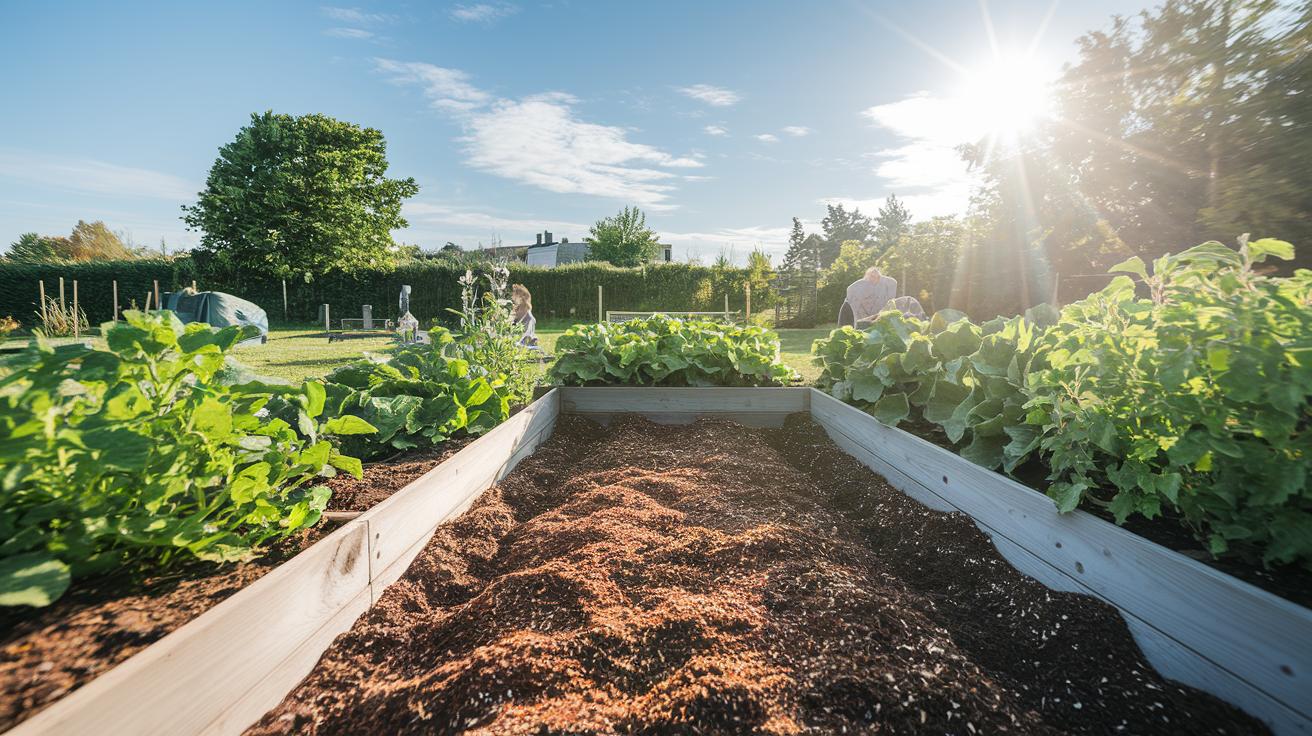
-
In fall, plant cover crops (plants that protect and feed soil) like winter peas or buckwheat by mid-September. They lock in nitrogen (nutrient that helps things grow) and smother weeds. Then, before those green shoots pop up in spring, mow or fold them into the earth so your garden wakes up fueled.
-
About two weeks before spring planting, work a 2- to 3-inch layer of compost (decayed organic matter that enriches soil) into your raised beds. You’ll catch that sweet, earthy scent as you fluff it in. Roots really dig it!
-
In March or April, test your soil’s pH (acidity level) with a simple home kit. If it’s too low, add lime (ground rock that raises pH); if it’s too high, sprinkle on sulfur (element that lowers pH). Do this 3 to 4 weeks before sowing so nutrients settle in.
-
When late spring arrives, brew a batch of compost tea fertilizer in a breathable bag. Then drench the soil around your young seedlings. It’s like a garden smoothie for soil microbes and gives plants a gentle lift.
-
Come June, sprinkle a thin 1/4-inch layer of vermicompost (worm castings, aka nutrient-rich worm poop) around each plant. Water it in so those goodies seep down. Your garden gets a steady, natural snack.
-
Once seedlings are a few inches tall, cover bare soil with a 2- to 3-inch mulch layer, straw, leaf mold (decomposed leaves), or shredded bark all work. This locks in moisture, keeps weeds down, and keeps soil cozy. And hey, squirrels love sneaking under mine, guess they like a warm blanket too.
Advanced Indoor and Protected‐Culture Seed Starting
Have you ever felt warm earth crumbling between your fingers? Start with a simple mix: equal parts peat moss (light, fluffy material), perlite (tiny white bits that help water drain), and compost (decayed plant material that feeds soil). Oops, spilled a bit of the mix there, but that earthy smell is so good. If seeds don’t sprout or stems flop over, that’s damping-off (a fungus that makes seedlings collapse). To fix it, stir in extra perlite so air can flow, swap out old compost for fresh, and wash your trays with mild soap before trying again.
Humidity makes all the difference. Pop clear dome lids over your seed flats and mist gently each morning so moisture stays at about 50–70% relative humidity (how much water the air holds). Lift the lid for an hour every day to let fresh air swirl in. Good humidity control means fewer wet spots and stronger shoots.
Want faster sprouts for tomatoes and eggplants? Bottom-heat mats bring gentle warmth from below. Pick a mat that fits your tray and plug in a thermostat probe. Aim for 70–85°F under the seed cells and rotate your flats now and then so heat spreads evenly. Once true leaves pop up, slide trays off the mat to slow down leggy growth.
Even when it’s chilly outside, you can keep sowing with a cold frame or greenhouse. Set benches about two feet high so you’re not bending over. Cut small vents or clip on a fan to move air and dodge hotspots. On frosty nights, tuck a little heater under the bench to hold temps above 50°F. Then give your seedlings 12–14 hours of LED shop light on a timer so they wake up hungry to grow.
Integrated Pest Management and Companion Planting for Sustainable Gardens
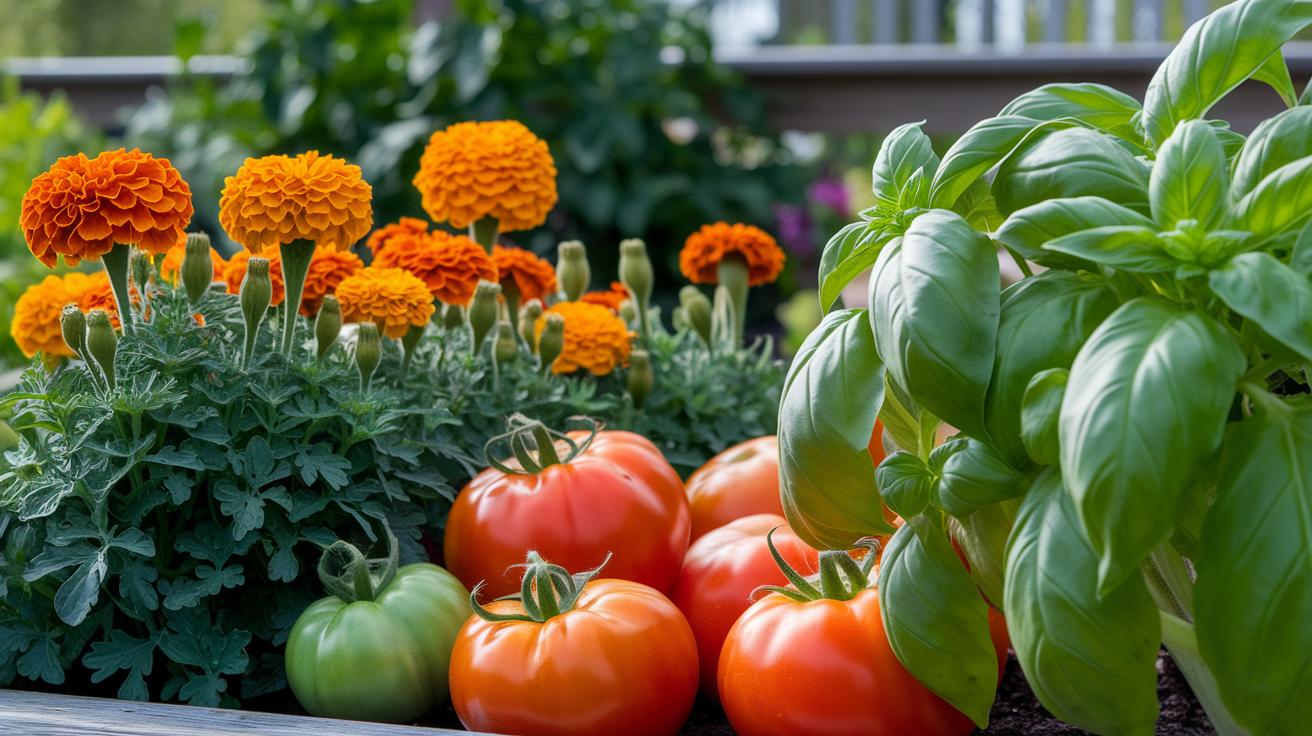
Crop Rotation Calendar
Think of your garden like a jigsaw puzzle you rebuild each year. In year one, bed A gets brassicas (cabbage and broccoli family), bed B hosts legumes (beans and peas adding nitrogen), bed C grows nightshades (tomatoes and peppers), and bed D holds root crops (carrots and beets). Year two shifts brassicas to B, moves legumes to C, sends nightshades to D, and plants roots in A. Year three, move brassicas to C, legumes to D, nightshades to A, roots to B.
In year four, brassicas land on D, legumes on A, nightshades on B, and roots on C. This keeps pests and soil-borne diseases low and gives your soil a mini vacation from the same crops. Keep a garden journal with dates and sketches so you always know what grew where. My journal even has coffee stains and an oops from when I planted peas where carrots should be.
Companion Planting Guide
Marigolds (bright orange flowers) love to sit beside tomato rows in spring! Their scent nudges root nematodes (tiny worm pests) away from your roots. Tuck basil (that sweet, peppery herb) among young tomato seedlings. It lifts flavor and invites buzzing pollinators.
Sow carrots next to onions once the soil warms up. The onion smell keeps carrot flies at bay. In early summer, plant chives near cabbage and lettuce to fend off aphids. By the way, have you ever seen a chive bloom? They look like little purple pom poms.
And don’t forget nasturtiums at the edge of cucumber beds in May or June. Their cheerful blooms trap leaf miners before they can nibble other veggies. You’ll spot pest patterns faster that way.
At the first sign of beetles or caterpillars, give young leaves a gentle mist of neem oil (plant-based insect spray) or insecticidal soap (simple soapy solution). Timing is everything. A quick mist now can stop an infestation later. For easy dosing steps and more tips see organic pest control for vegetable gardens.
Region-Specific Frost and Climate Adaptation in Your Organic Calendar
Your garden’s planting dates are just a rough map. You’ll tweak them so your seedlings don’t freeze stiff or wilt in a surprise heat wave.
Have you ever felt that crisp snap of an early frost underfoot?
- Use a local frost date lookup (the day temps dip below 32°F). Many county extension sites post simple charts with your average last spring frost and first fall frost.
- Count back 6 to 8 weeks from your last spring frost for warm-season seed starting. For cool-season crops, count back 2 to 4 weeks.
- Shift your transplant dates about a week after the soil feels warm (usually two weeks past the last frost). And harden off seedlings (young plants) by setting them outside for a few hours so they adjust to sun and breeze.
- Check for microclimates in your yard. A south-facing wall can heat things up 1 or 2 weeks earlier, while shady nooks hold the chill longer.
By the way, my cat loves sunning on the raised bed!
- Jot these dates into your garden journal. Then watch the weather forecast as frost season nears.
These tweaks will make your calendar fit your backyard’s unique quirks and help your seedlings thrive where you plant them.
Succession Sowing and Continuous Harvest Strategies in Organic Vegetable Calendars
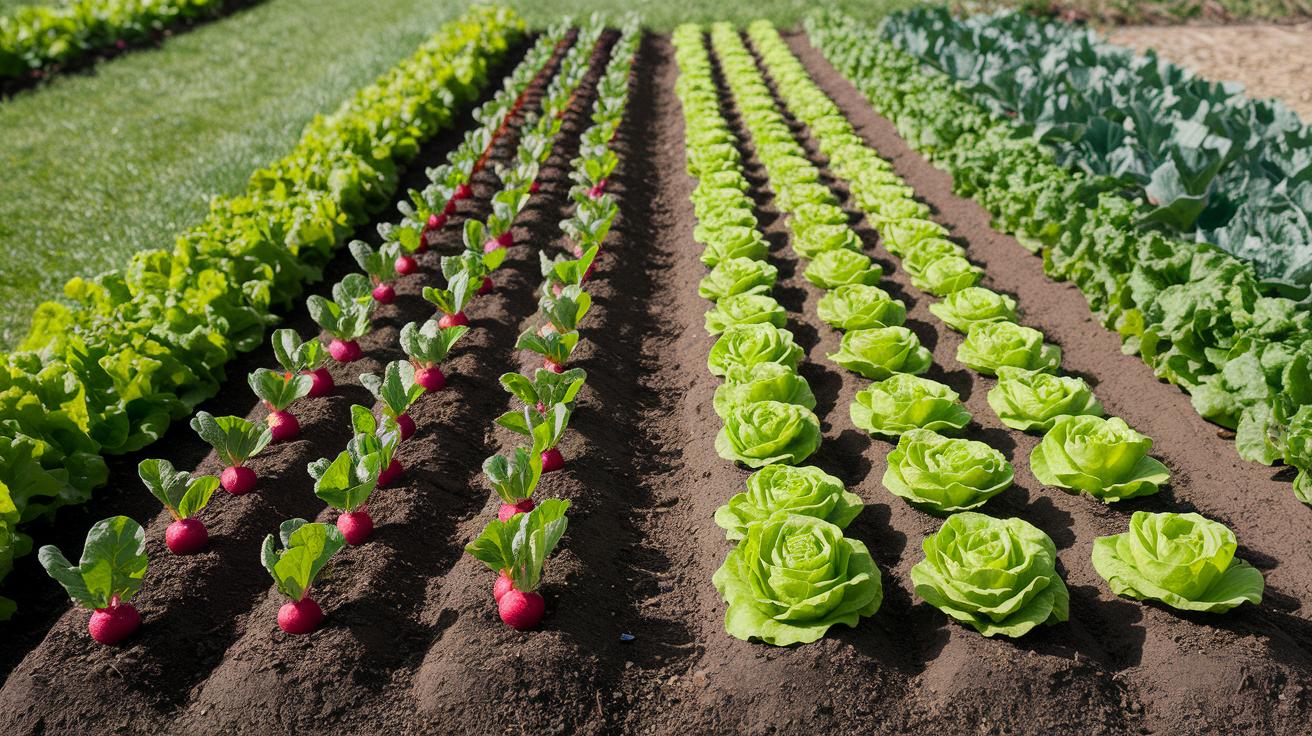
Succession sowing (planting small batches of seeds every 10–14 days) is like a steady garden rhythm. You start a patch, and just as you pick the last veggie, a fresh row pops up. It’s simple. And it keeps your kitchen stocked without gobbling all your garden space.
Think of quick-grow crops like radishes (25 days from seed to crunchy bite), lettuce (30–45 days to salad-ready leaves), and spinach (40–50 days until you can pick soft, green leaves). Have you ever smelled fresh spinach in the morning air? Jot those numbers on your calendar so you know exactly when to plant next.
So here’s the plan: every two weeks, toss a handful of seeds into your bed. One week you’ll harvest bright radishes. The next you’ll mix a fresh lettuce salad. Soon after, you’ll clip tender spinach for stir-fries or smoothies. Dinner never looked so good.
| Crop | Days to Harvest |
|---|---|
| Radishes | 25 |
| Lettuce | 30–45 |
| Spinach | 40–50 |
Planting now sets you up for summer harvest. Happy sowing!
Final Words
Jump right in: we’ve covered a month-by-month seed-sowing and transplant guide, got soil set with compost and cover crops, tackled indoor seed starting, set up pest defense with companion plants, and adjusted for frost and climate.
Then we showed how to keep fresh veggies coming all season with smart succession sowing.
Planting by this guide turns chores into fun family time and frees you from constant yard work. You’re all set with a seasonal organic vegetable planting calendar to enjoy a bountiful, easy-care garden.
FAQ
What is a year-round organic vegetable planting calendar?
A year-round organic vegetable planting calendar lays out each month’s indoor and outdoor seed-sowing dates, transplant windows, soil temperature ranges, plant spacing, and frost reminders tailored to your climate zone.
How do I prepare and amend garden soil organically?
Preparing and amending garden soil organically means adding finished compost two weeks before planting, sowing winter cover crops as green manure, adjusting soil pH in early spring, side-dressing with vermicompost midseason, and topping with organic mulch.
What advanced techniques help with indoor seed starting?
Advanced indoor seed starting uses a balanced mix of peat, perlite, and compost, a humidity dome to keep 50–70% humidity, bottom‐heat mats set to 70–85°F for warm‐season crops, plus cold frames or greenhouse benches for extra warmth and light.
How can I manage pests and use companion planting organically?
Managing pests and companion planting organically involves rotating crop families yearly, pairing marigolds or basil with vegetables to repel pests and boost flavor, and applying neem oil or insecticidal soap at the first sign of infestation.
How do I adapt planting schedules to local frost dates and microclimates?
Adapting planting schedules means looking up your local last and first frost dates, shifting seed-start and transplant windows accordingly, and adjusting by up to two weeks for nearby heat sources or chilly low spots.
What is succession sowing, and how does it ensure continuous harvests?
Succession sowing means planting small batches of quick-maturing crops—like radishes every 10–14 days—to replace harvested produce, giving you a steady, ongoing supply of fresh vegetables throughout the growing season.

